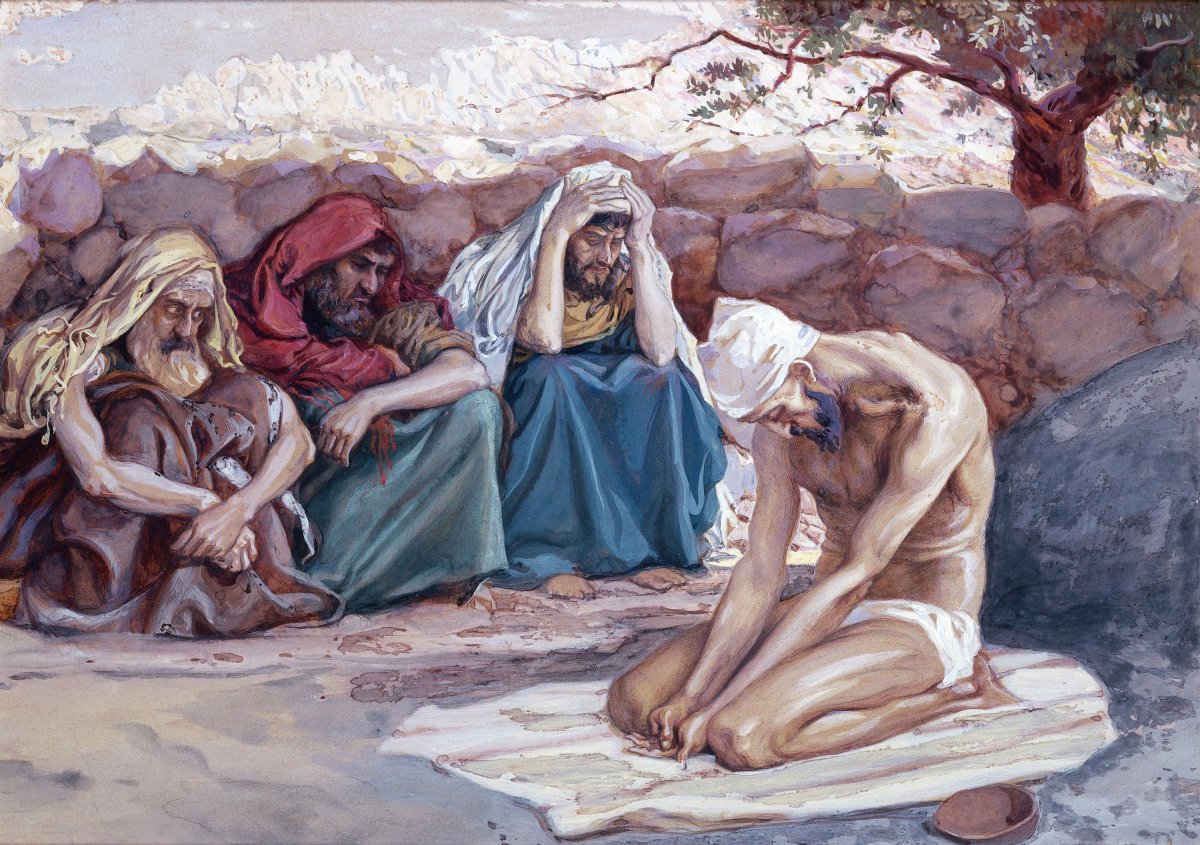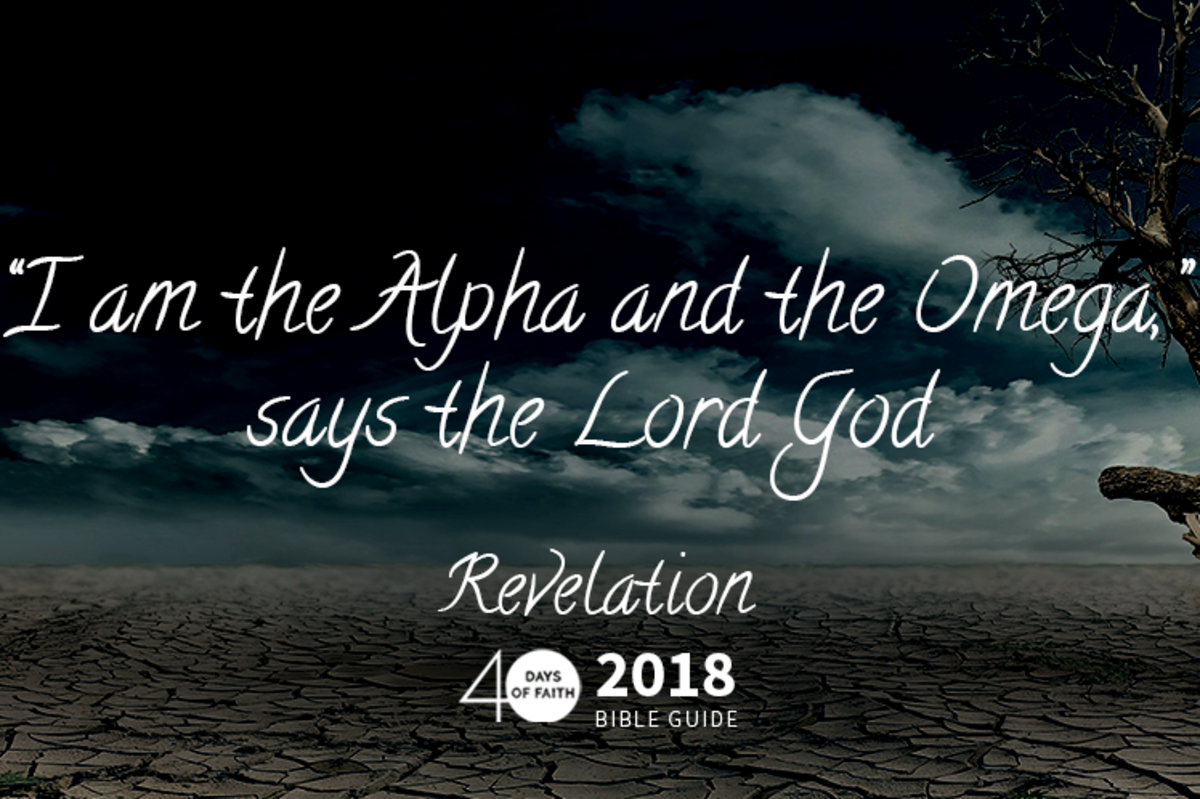Understanding the Ancient Concept of "Head"
Greeks and the Ancient Word "Kephale"
Welcome to another one of our Hubs. We have another inspired article for you from Christians for Biblical Equality. This one was published in the Priscilla Papers, Volume 20, Number 3, Summer 2006. Once again we have another outstanding writing from one of our founders, Catherine Clark Kroeger. Though Catherine's spirit has passed onto our heavenly Father in heaven with her husband Richard, her writings will still have a definite impact on the way we read the Bible. There are so many misunderstandings that need to be made straight. Both Catherine and her husband Richard were working Archaeologist, so you see Catherine leaves no stone unturned to get the facts for us, especially with assistance from the Holy Spirit revealing hidden new truths to them.
The title of her article is, "Toward an Understanding of Ancient Conceptions of "Head." How and amazing archaeological discover in Italy sheds more light on the correct concept of the ancient Greek word for "head." For nearly two thousand years, an elegant country Villa lay buried by the eruption of Mount Vesuvius in A.D. 79. Located some three miles from Pompeii, the Villa Oplontis escaped the attention of archaeologist until the beginning of excavations in the last part of the twentieth century. (Are you set to learn more from what was found here or will you close your eyes to these remarkable truths that will affect how we should see what Jesus Christ meant by headship and servant leadership - lionswhelp).
Now this splendid country residence emerges in a remarkable state of preservation, the colors of its frescoes still fresh and vibrant. The property belonged to the estate of someone in the family of the Emperor Nero's second wife Poppea, perhaps to the lady herself. Poppea appears to have been the instigator of Nero's decision to launch a persecution for the burning of Rome.
Though Nero's family made bad spiritual choices, the artistic taste is impeccable with which the Villa Oplontis is decorated. It contains remarkable examples of Roman fresco art, the painting upon wet plaster of art motifs, and scenes. Depicted are mythological figures, peacocks and other birds, garden scenes, decorative garlands, representations of walls, houses, mountains, and much more. In all, there are more than sixty rooms, many lavishly decorated.
In one chamber the wall paintings exhibit a series of fountains placed in garden settings. While the others are somewhat conventional, one shows a seated sphinx with a fountain merging from its head. The conception may appear bizarre to our modern ways of thinking, but, in antiquity, painting and scuplture occupied a position of great importance. There are many literary descriptions of ancient works of art and how they should be understood. Plato (429-347 B.C.) condemned painting that conveyed no understanding of a deeper reality. By the New Testament era, there was a serious effort to indicate genuine emotion and inner sense.
In the charming painting of the Villa Oplontis we see illustrated the concept of the head of a numinous being as the source of a river, spring, or fountain. Although sphinxes were sometimes depicted as the source of flowing water, artistic representations in the ancient world more commonly show the source of a river or stream as issuing from the head of Achelous, considered the father of wells and springs. A magnificent base relief of this deity's head was placed at the beginning of a stream at Megara on the Isthmus of Corinth. The other gods sit about in full figure, but of the river god only the head is shown, for the river itself is his body. As we shall see, some of the ancients were careful to define the function of the head in relationship to the rest of the water.
There are many ways that we can gain a knowledge of conceptions entertianed by the ancients. This is particularly important when we approach a subject as emotionally charges as the way we should understand the term "head" - both within and outside of the writings of the New Testament. We can inform ourselves by viewing vase and wall paintings, statuary, mosaics, coins, classical texts, the writings of the church fathers, inscriptions - even ancient lexicons. Thus, it is that we may compare what we see with what we read in the ancient written sources. We deal with the ancient conceptions in both art and language. In 1863, Bishop Lightfoot wrote: You are not to suppose that a word [some New Testament word which had its only classical authority in Hordustus] had fallen out of use in the interval, only that it had not been used in the books which remain to us: probably it had been part of the common speech all along. I will go further and say that, if we could only recover letters that ordinary people wrote to each other without any thought of being literary, we should have the greatest possible help for the understanding of the language of the New Testament generally.
This was written before the remarkable finds of Greek papyrii in the dry sands of Egypt. Each year, thousands more documents are recovered: personal letters, business communications, legal briefs, bills of sale, marriage contracts, and so forth. Using these, as well as the previously known sources, it is now possible to develope broader lexical values for many terms that were previously known only in the writings of the Greek New Testament. In the case of "head," we have strong indications of the definition as it was understood by the ancients.
Homer called the innermost part of a stream its "head," while Eusthatius explained that the river's head is that which generates the whole river. Herodotus tells of a river that rose from thirty-eight seperate sources or "heads." Philoponus, in the sixth century A.D., noted that a river, when it rushed upon a rock, might divide and become two streams, even though it had a single source (kephale), and the medical writer Galen observed that a river arising from a single spring might be larger at the "head (kephale) than farther down along its banks. The Digest of Justinian declared authoritatively, "The head is the place whence the water issues forth."
I find all these details extremely helpful in understanding Jesus as a source of our life. He's ever moving and accomplishing new things in his future bride the Church. He empowers her with zeal to get the witness of Jesus done on a timely manor despite abuse from our advisary Satan and his demons, who go out of their way, to hide simple truths to the way we should focus on Christ and his servant leadership examples. Thank God for Catherine Kroeger, now we know how Christ loved the Church his bride and is not some kind of tyrannical bossy male that thinks of himself first as the greatest and wants everyone to keep in line or else be knocked around. He even gave his life for his Church to start the spiritual Family of God for us in the New Testament. He generates love to his bride and us individually..
Head as Source of Generation
Not only with respect to flowing water was the head considered the place of beginning. Aristotle himself declared that the head was the source or beginning of life, with human sperm being created in the head, traveling down the spinal cord, flowing into the genitals, and so procreating the human race. Thus, the ancient writers sometimes referred to sexual intercourse as "diminishing one's head. Artemidorus of Ephesus maintained that the head was like one's father because, just as the head was the source of light and life for the whole body, so a father was the source of life for his son. "His head (kephale) is like one's parents because it is the source or cause of one's having life." Shortly after the New Testament period, Plutarch told those who thought the brain "to be the source of generation. Philo, a Jewish contemporary of Jesus and Paul, wrote,"As though he were the head of a living being, Esau is the progenitor of all those members who have been mentioned."
Among other values, the head as the source of paternity was understood by the early Christian fathers. Iranaeus equates 'head" with "source" when he writes of the "head and source of his own being." Hippolytus emphasized the prodctivity of this bodily member when he designated the head as the characteristic substance from which people are made. He noted, In the head is said to be the brain, formulating the being from which all fatherhood is produced. Cosmas Indicopleustes (sixth century A.D,) called Adam the "head" of all people in this world because he was the source and father.
Photius, a ninth century Byzantine scholar, was renowned for his vast knowledge of classical authors and his preservation of numerous quotations from works that are now lost to us. He drew upon earlier scholars passionately committed to presevation of classical Greek and promoting a continual knowledge of its words and forms. These works Photius edited and incorporated into a formidable lexicon intended as a reference book to aid later writers in understanding the vocabulary of classical and sacred authors. He quite specifically stated that "head' (kephale) was considered to be a synonym for procreator or progenitor.
Thank God that Catherine is one of those special Classical Greek scholars who dug up all this history out for us, so we can have a better understanding of these Greek words, so we can understand Jesus as our source of life, who loves us dearly. She learned the Greek language and always carried her own Greek Bible. She was always ready to give an answer to those men and women that wanted to know more, or needed to know more because of wrong interpretations by those who's scholarship was found to be very shallow, 2 Timothy 2:15; 3:14-17.
Seeking a Definition
But how are we to understand 'head' (kephale) as it is found in koine Greek, the language of the New Testament? A term must be defined not by the assigned value in a lexicon but by its actual usage in various contexts. Definitions in particular may be identified by working with the larger pool of occurrences than can be found in the New Testament.
We may substantiate a meaning for a word when it is used interchangeably with another term in the same context. This may happen when the same line of verse is quoted, sometmes using a certain word and sometimes replacing it with an alternate having the same meaning. Ancient writers, like modern ones, loved to demonstrate their erudition and to embellish their works with the efforts of former poets. Even if the original work is lost, the quotations remain, scattered in extant pieces of literature. Such a scrap of poetry, known only as it is cited by later writers, is called a fragment.
In the case under discussion, a line of Orphic poetry has been found in the works of even later writers, running all the way from the sixh century B.C. to about A.D. 1,000. Here we discover the word kephale (head) being used interchangeably with arche (beginning, source or point of orgin). The fragment speaks of Zeus as the beginning, middle, and end of all things. The interchange of two terms recurring in the same quotation is important because it demonstrates that in the seven writers' minds they have the same semantic value and may be freely exhanged. It is the more valuable because the usages extend over so long a period of time.
For example, the oldest, an Orphic fragment probably from the sixth century B.C., declares:
Zeus was born first, Zeus last, god of the bright bolt: Zeus is the head [kephale], Zeus the middle, from Zeus are all things made.
Sometimes, however, the last line runs, "Zeus the beginning [arche], Zeus the middle, and Zeus the end" Four times Zeus is called head, kephale, and three times arche, source or beginning. Thus, the two terms appear synonymous in this context, as has been noted by various classical scholars.
Head as Producing Growth
Other artistic representations sometimes depict the head as productive of growing life. The myth of Athena springing from the head of Zeus is known in story form, mosaics, frescoes, and vase paintings. Ancient Orphic burials sometimes contained figurines of the soul reemerging into the world after remaining nine years beneath the bosom of Persephone, queen of the dead. From the head of the goddess sprout up new little heads, some surrounded by leaf buds as they grow to full reincarnation status. The theme of head as starting point for growth is unmistakable.
Thus, St Augustine declared love to be the head that produced all the other Christian virtues. From its fertile soil sprang the rest of the spiritual graces. In commenting on Galatians 5:22-23, he wrote: The Apostle Paul, when he wishes to commend the fruit of the Spirit against the works of the flesh, put this at the head: "the fruit of the Spirit is love," he said, and then the rest, as springing up from the head, are twined together. These are joy, peace, patience, kindness, goodness, faith, perserverance, self control and chastity.
Exactly this concept of growth is what we find explicated by the Apostle Paul in Colosians 2:19 and Ephesians 4:15-16, his two sole passages dealing with the function of the head in relation to the body. In both of these passages, he maintains that the head not only causes growth but also causes the body to build itself up. A more expanded paraphrase might read as follows:
From the head the entire body grows with the growth of God as it is supplied by the head and held together by every ligament and sinew. (Col. 2:19)
Paul gives very nearly the same concept when he turns to the relationship of head and body in Ephesians chapter 4, certainly a passage to take very seriously when we are considering Ephesians chapter 5. The Apostle Paul wrote: Let us grow up in all things unto Him who is Christ, the Head. He causes the body to build itself up in love as the head provides empowerment according to the proportion appropriate for each member as they are bound and supported by every sinew. (Ephesians 4:15-16, the author's translation)
Frequently, we assume that the Bible uses "head" to imply "boss" or "chief," and so we miss the assurance of this passage. Here the focus is on the function of the head in producing growth. Every part of the body is connected to the head, and, if the connecting nerve is severed, even a perfectly healthy member will whither. But every part is also interconnected to every other part, and each has a different function that causes it to depend on every other member.
We cannot do better than to emphasize the interdependence and relationship noted by Paul between head and body. How illuminating to conceive of the husband as empowering the wife to build herself up in love so that she may grow into the person that God meant her to be.
Yes, as Catherine pointed out, this is so important for the wife to be lovenly respectful to her husband that he doesn't have to worry about her wandering away after someone else or fleeing for her life from some despotic male who only wants to beat her into submission. Submisssion is a two way street and women need room to become Proverbs 31 women. Women (ezer's), who are forever making their husband look good through their reciprical love for him is a type of bride for Christ, Proverbs 31:10-31. She needs space to produce the fruit of the Spirit in Christ Jesus, and for her husband, Ephesians 5:21. So, the Church is to bear the same spiritual fruits of the Spirit in her relationship to Christ, Galatians 5:22-26.
Relationship of Head and Body
Medical writers considered the head as the element in treating the entire body. Aetius Medicus insisted that a physician must always begin with the head, because it was the root and source of the entire bodily condition. Aretaeus wrote, "From the head is the source of life, because the head is the place of preception and the starting point of the nerves. Philo announced that the limbs of the body draw life from the forces in the head.
The commonly held anatomical view of antiquity, that the head was the source of the body's existence, led the foremost exegete of the early church to further metaphorical uses. From the head John Chrysostom said, the senses "have their source and fount."
In the head are the eyes both of the body, and of the soul... All the senses have thence their origin and source. Thence are sent forth the organs of speech, the power of seeing and of smelling, and all touch. For thence is derived the root of the nerves and bones. The spirit or vital principle, he explained, "Descends from the brain, and communicates the sensitive facutly which is conveyed through the nerves." The head is not only the source (arche) of the body but also the stabilizing factor (bebaiote). How often today we fail to recognize the implications of the sensitive dynamic of head and body!
Theological Considerations
The definition of kephale is of contemporary importance, not only because of the debate over the proper role of husband and wife in Christian marriage, but also because 1 Corinthians 11:3 speaks of God as head of Christ. The church fathers were careful to offer definitions.
Athanasius stated, "For the head (which is the source) of all things is the Son, but God is the head (which is the source ) of Christ." Cyril, Archbishop of Alexandria, wrote of Adam:
Therefore of our race he became first head, which is source, and was of the earth and earthy. Since Christ was named the second Adam. He has been placed as head, which is the source, of those who through Him have been formed anew unto Him unto immortality through sanctification in the Spirit. Therefore, He Himself our source, which is head, has appeared as a human being. Yet He, though God by nature has Himself a generating head, the heavenly Father, and He Himself, though God according to His nature, yet being the Word, was begotten of Him. Because head means source, He establishes the truth for those who are wavering in their mind that man is the head of the woman, for she was taken out of him. Therefore as God according to His nature, the one Christ and Son and Lord has as His head the heavenly Father, having Himself become our head because He is of the same stock according to the flesh.
Chrysostom's twenty-sixth homily on 1 Corinthians 11:2 demonstrates concerns for both theology and praxis. The text reads, "But the head of the woman is the man; and the head of Christ is God." He realized that this text might be exploited by heretics wishing to subordinate the Son. He uses here the technical term elatton, employed in christological controveries for the diminishing of the Son.
The first section of the homily is in fact a refutation of subordination arguments. He observes that the heretics propel themselves into dire situation by their misunderstanding of the text. They misconstrue what the apostle intended by his use of the term kephale. For this reason , he engages in a semantic discussion with profound theological implications. A major part of his argument revolves around the definition of kephale.
Chrysostom understands well that in 1 Corinthians 11:3 "head" is employed as a metaphor and as such cannot be comprehended in precisely the same sense in each of its occurrences within the text: Therefore, if we choose to take the term "head" in the like sense in all the clauses, the Son will be as far from the Father as we are from Him. Nay and the woman will be as far removed from us as we are from the Word of God.
The meaning in the individual case must be determined by the occasion (to aition). No wooden assignment of definition for him. He fully recognized that there was a broad semantic range of meaning.
The term "head" must have different connotations according to the circumstances. Though the Son came in obedience, He came not as a slave but "as free, yielding obedience and giving counsel. For the counselor is not a slave." Rather, Chrysostom notes that "the Son hath the same honor with Him that begat Him."
Believers must understand that the name "Son" means "that he is of the same essence and that He is of God." Certain earthy aspects of father - son relationships should not be applied, just as the metaphor "light" does not apply to all circumstances of natural light. Daylight, for instance, can be superseded by darkness, but God's illumination is eternal. Thus, metaphors must be used with care.
How, then, should kephale be understood as informing the relationship betwen the Father and Son? In what way could the imagery be comprehended, which associations should be accepted, and which rejected? As applied to the Trinity, Chrysostom said, kephale must imply, "perfect oneness and primal cause and source."
It is always a challenge to understand an ancient text and to apply it appropriately to contemporary situations. The better we can acquaint ourselves with various aspects of the world of the New Testament, the better we shall understand its message for today.
In the case of our understanding of "head," an enormous emotional and spiritual significance is attached, as the Bible declares God to be the head of Christ and man to be the head of woman.To declare the Father as "boss, chief, or authority over" is to deny the status of the eternally begotten Son, equal to Father and Holy Spirit in goodness, power, and love. To declare the husband as,"boss, chief, or authority over" the wife is to cause an imbalance that may threaten the very fabric of the marriage. Indeed, Jesus implied that inferiority of one partner in a relationship hindered intimacy (John15:15) - (We are more than just servants. We are as intimate as Christ's brothers and sisters even as very close good friends. We are Family! - lionswhelp).
As the Apostle Paul said, woman was taken from man, and now man is born of woman - and all things are of God. Neither is the man without the woman nor woman without the man, in the Lord, (1 Corinthians 11:11-12)
Well, there you have it right from the Greek Classical Scholars mouth. She still reaches out to us from the grave. I'm no scholar but I do appreciate all her hard work of finding the facts that will make the Holy Scriptures come alive and believable. There are many interpretations of the Bible and even though interpretations like the 1611 King James is fairly accurate there are certain areas that need clarification so we don't get snared by a misinterpretation of some person obsessed with any unsavory ideas to distort their real intended translation, especially in reference to our gender relationships. There is only one interpretation which comes down to us from the Holy Spirit. So there is a need for scholars to look deeply for the real meaning of how the Holy Spirit wants the Word of God interpretated., 2 Peter 1:19-21.
For those of you that would like to do your own more indepth study of this article please feel free to go to Christians for Biblical Equality for your own copy of the Priscilla Papers, Volume 20, Number 3, Summer 2006, with all the references that show where Catherine got her information. Try our link. There are still many fine scholars at CBE who make it their business to study and prove all areas that prove that Jesus Christ the Word is our true souce of life and servant leadership according to a correct interpretation of "head." God bless your understanding, Proverbs 2:1-7.
Here are a list of books Catherine Clark Kroeger wrote or co-wrote that should enlighten your understanding. Take a look and see:
I Suffer Not a Woman, Rethinking 1 Timothy 2:11-15 In Light of Ancient Evidence, I highly recommend this important book co-written by both Richard Clark Kroeger and Catherine Clark Kroeger
Study Bible for Women (New Testament, NRSV) ed. with Mary Evans and Elaine Storkey
The IVP Women's Bible Commentary - ed. with Mary Evans
Women Elders... Called by God? - Women and Ordination - also available in Spanish, with Richard Kroeger
The Goddess Revival, Co-wrtten with Aida Besancon Spencer
Refuge from Abuse - Healing & Hope For Abused Women -with Nancy Clark
No Place for Abuse - Biblical & Practical Resources To Counteract Domestic Violence, with Nancy Nason-Clark
Healing the Hurting - Giving Hope & Help To Abused Women - with James Beck
These are just some of many books that are available for you at Christians for Biblical Equality. Come and visit with CBE on their Website link resources.!
Christians for Biblical Equality
- Get Wisdom, Get Knowledge, Get Understanding
Are you a seeker that has been continually looking and knocking for the truth of gender equality. This is where you can find it revealed to you. Take a look and you will find the truths that you need and are looking for.








